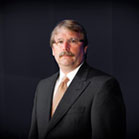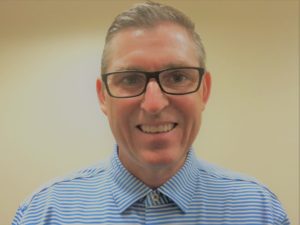SS&C’s single-platform initiative is targeting aspects of operations that are getting increasingly complex.

Normand A. Boulanger, vice chairman, SS&C
SS&C Technologies has been quietly laying the groundwork for a single-platform initiative, dubbed Singularity, that will target investment operations and accounting. While the effort has had a soft launch this year, a more formal debut is slated for next year.
“We’ve done a soft launch selling it to specific customers where it’s a good fit. We’re looking to do a more formal launch early in 2019,” Normand A. Boulanger, vice chairman of SS&C, tells FTF News. “We’re building an organization to support the sales, the clients, and the implementation infrastructure. We’re going to take our time and make sure we get that right — get customers up and running on it and referenceable.”
Officials at SS&C describe Singularity as a cloud-based, end-to-end solution “that is designed to support the entire operating model of financial institutions across all industry segments including insurance, asset management, hedge funds and REITs [real estate investment trust]. In addition to eliminating siloed applications, SS&C Singularity incorporates machine learning and intelligent workflow automation, enabling it to learn from user behavior and suggest more optimized workflows over time.”
In particular, Singularity will feature:
- Support for all asset class accounting and all investment management operations on a single cloud architecture and database, with a common interface;
- Monitoring of all users’ actions to facilitate learned behavior that will be applied to foster more efficient workflow;
- Actionable monitors that measure efficiency and present relevant data and activities in real-time;
- Predictive tools to help end-users find specific functions and pre-emptively fill in commonly used fields or values based on prior history;
- Intelligent process automation to cut steps and “streamline manual, repetitive operational and accounting processes.”
SS&C hopes that Singularity will help firms with some key aspects of increasingly complex operations.
“The question is: How do we solve some of the problems facing the industry?” asks Boulanger. “Can we build something that leapfrogs the current paradigm of best-of-breed, which is effectively what you have when you have multiple platforms? There was always some thought of: ‘Can we build something that would leverage our knowledge across multiple markets and accounting whether it’s hedge funds or insurance companies, into a single platform?’ ”
With that in mind, Boulanger and his team architected SS&C Singularity so that it will consolidate data into one cloud-based system that can actually suggest workflow improvements over time.
Some of the problems that Singularity is attempting to address are:
- Growing amounts of data within a siloed operational ecosystem;
- Platforms that are “linear in function, difficult and time-consuming to upgrade, relatively inflexible and costly to operate;”
- Staff productivity challenges that can be resolved by automating the accounting lifecycle;
- Greater agility for clients that need to quickly develop and implement new investment strategies and product offerings, and to enter new markets;
- The elimination of manual, paper- and spreadsheet-based processes;
- Ways to streamline deployment and simplify on-boarding and training;
- Adjusting to upgrades or new functions with virtually no disruption with cloud hosting;
- Cut latency and operational risk via automation and straight-through processing across all workflows
- Mitigate cyber-risk via certified and audited cloud security

Steve Steffy, director of operations, Trilogy Global Advisors
A client of SS&C’s, Steve Steffy, director of operations at Trilogy Global Advisors in Winter Park, Fla., got a chance to review Singularity at the company’s Deliver conference in Las Vegas last month.
“The SS&C officials showed how they were developing kind of an A.I.-type of ‘all-in-one’ investment operations and accounting platform,” Steffy says. “Singularity’s reconciliation capabilities were especially cool. I mean you just drag the transaction over — the transaction of a different file, whether it’s a custodial file, a fund accounting file, an internal file from our OMS [order management system] — whatever the case may be. After two or three iterations of that, it picked up and just reconciled the rest of the portfolio.
“That was pretty cool, and I know that my head of operations would love it,” Steffy says. “In fact, she had stated that in an email that AI and a reconciliation process would be great because: ‘We don’t have to keep remapping when something changes, we can do that drag and click.’ It would be great since we are a complete top-to-bottom SS&C user, to be able to just within the system say, ‘Okay, these transactions need to go to the accounting system and not have any interaction at all, but just click the button and move the transactions right into the accounting system.’ ”
The IT behind Singularity consists of:
- For the presentation layer
- js: an open-source JavaScript framework for developing user interfaces
- Responsive design built with Bourbon (Sass mixins library)
- net MVC architecture pattern (Model/View/Controller)
- For the service layer
- API [application programming interface] gateway
- RESTful Web API
- Machine learning micro-service built with Python [a high-level programming language]
- Windows Communication Foundation (WCF) Service implemented with MS Enterprise Library Unity Block for dependency injection
- For the data layer:
- MongoDB [an open-source cross-platform document-oriented database program]
- Microsoft SQL Server 2016
Much of the inspiration for Singularity can be traced to a vendor, Open Information Systems, Inc. (OIS) of Sandy Hook, Conn., that SS&C acquired in 2005, and its CEO, Tom McMackin who then joined SS&C.
“Tom was on my team and we were talking about changes he had been making in his customer base for money markets,” Boulanger says. “He had some thought of whether he could build a single platform from what he was working on. The genesis of Singularity was a small group of people exploring whether this idea of an end-to-end solution to support the entire operating model of financial institutions across all industry segments, was feasible or not. In a short period of time we started to get comfortable — this could be something we could pull off. About two-and-a-half years ago this got started, maybe a little less.”
Boulanger led a small team to explore how Singularity could be built “and to see how far we could take it,” he says. “At the start, it was more a proof of concept [POC]: will this work or not? Fortunately for us, we found that this was really going to work,” he adds.
Need a Reprint?